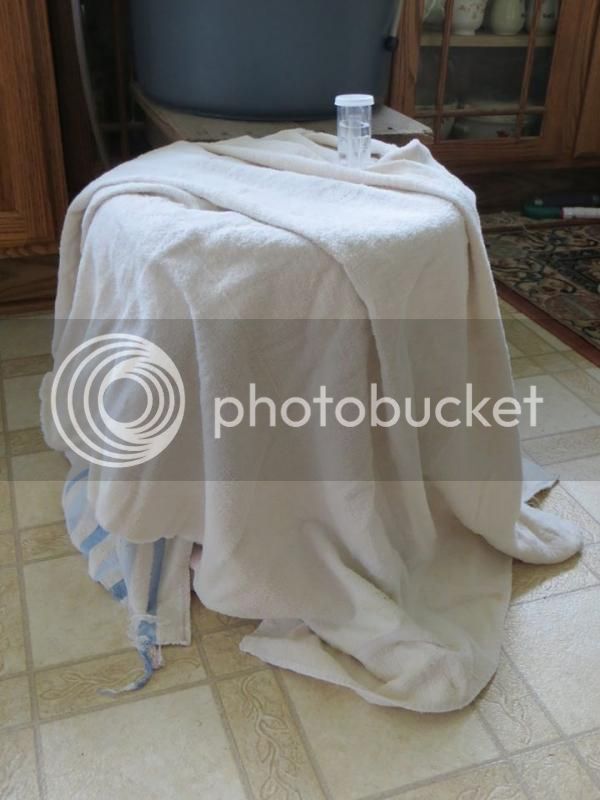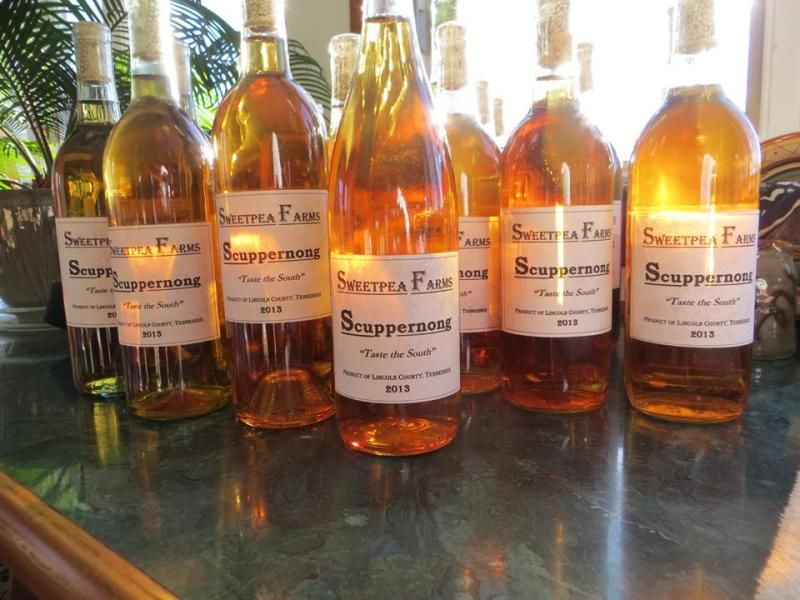jswordy
Senior Member
- Joined
- Jan 12, 2012
- Messages
- 10,042
- Reaction score
- 35,276
My first boil is in the fermenter!

All extract, so I can mess up as little as possible the first time out.
1 - Cooper's English Bitter kit
500 mg - Amber DME
250 mg - Dark DME
1 lb - Honey
Boiled 2 gallons water, removed from heat, added Bitter kit malt.
Opened and added DME and honey into fermenter. Added 1 gallon previously boiled hot water, stirred to start dissolution.
Poured kit wort into sanitized fermenter. Stirred thoroughly.
Added:
1 oz - Cascade, 5 minute steep while stirring.
Chilled to 80 degrees F.
Pitched the kit yeast.
IG = 1.045; Potential alcohol = 5%
I've got a vigorous ferment going, plan to secondary for a week and then bottle, using 1 1/4 cup orange blossom honey as the carbonator (1.35 parts honey = 1 part sugar). Is that enough, or should I boost with 1/4 cup corn sugar, too?
I want to clear the beer further in secondary, but I know beer is way more prone to infection than wine.
If I secondary in a full sanitized carboy for a week, I'll be OK, right?
Smells good to me; wifey says it smells like chemicals. All I smell is citrus. Love Cascade!

All extract, so I can mess up as little as possible the first time out.
1 - Cooper's English Bitter kit
500 mg - Amber DME
250 mg - Dark DME
1 lb - Honey
Boiled 2 gallons water, removed from heat, added Bitter kit malt.
Opened and added DME and honey into fermenter. Added 1 gallon previously boiled hot water, stirred to start dissolution.
Poured kit wort into sanitized fermenter. Stirred thoroughly.
Added:
1 oz - Cascade, 5 minute steep while stirring.
Chilled to 80 degrees F.
Pitched the kit yeast.
IG = 1.045; Potential alcohol = 5%
I've got a vigorous ferment going, plan to secondary for a week and then bottle, using 1 1/4 cup orange blossom honey as the carbonator (1.35 parts honey = 1 part sugar). Is that enough, or should I boost with 1/4 cup corn sugar, too?
I want to clear the beer further in secondary, but I know beer is way more prone to infection than wine.
If I secondary in a full sanitized carboy for a week, I'll be OK, right?
Smells good to me; wifey says it smells like chemicals. All I smell is citrus. Love Cascade!





